AMD’s (AMD) - Get Report new Zen 3 desktop CPUs and RDNA 2 gaming GPUs deliver major performance and power efficiency gains relative to prior-generation offerings. And from the looks of things, AMD's next-gen CPU and GPU architectures are also likely to provide major improvements.
On Friday afternoon -- a day after AMD’s Ryzen 5000 desktop CPU line, which relies on its new Zen 3 CPU core microarchitecture, officially became available -- I talked with Rick Bergman, the EVP of AMD’s Computing and Graphics Business Group. Bergman was previously an AMD exec from 2006 to 2011, and then served as Synaptics’ CEO for more than 7 years. He currently oversees AMD’s PC CPU, gaming GPU and game console processor businesses.
Here’s what Bergman had to say about various subjects related to near-term demand trends, AMD’s current offerings and his company’s product and technology roadmaps, slightly edited for clarity.
The demand AMD’s Ryzen Mobile notebook processor business, which was reported to have seen OEM sell-through more than double annually in Q3, is seeing from the gaming and education markets.
Bergman: “We are seeing strength...and actually, you hit on two of the particular areas. One is certainly in the gaming area, that segment of the market is growing very rapidly. We're getting great design wins [for the] current generation, as well as we look forward [for] next generation-type products.”
“And the other area is of course Chromebooks, just with education....[In many places] there is no live or in-school [learning]. This has generated huge demand for Chromebooks, and in this case, we're still catching up with the demand.”
Demand trends for AMD’s desktop CPU business, at a time when corporate desktop sales are soft but gaming desktop spend is strong.
Bergman: “Corporate desktops are definitely lagging for all the obvious reasons....Back in Q2, we expected [desktop CPU sales] to be a little bit slow, but instead, demand for [them] really took off. A lot of it is based around gaming. Our higher-end processors certainly are taking off. We got a tremendous reception for the Ryzen 5000 series yesterday, when they went on sale....We're trying to meet that demand as quickly as possible.”
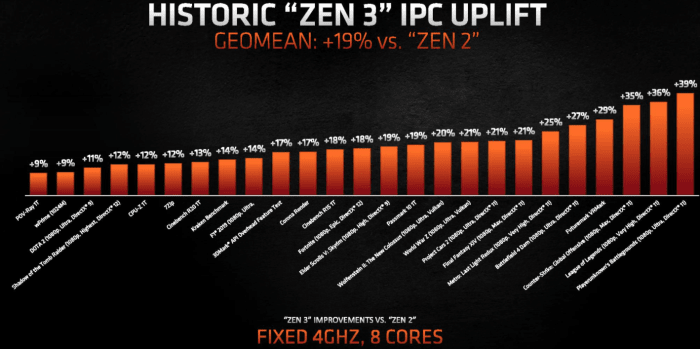
Instructions per clock (IPC) gains for AMD's Zen 3 microarchitecture relative to Zen 2. Source: AMD.
How AMD feels about its ability to meet demand for the Ryzen 5000 line, whose most powerful CPUs are for now sold out at major retailers and selling for large aftermarket premiums, in the coming weeks and months.
Bergman: “We have been planning for this day for quite a while, so we brought in a lot of supply, especially relative to other launches that we've done. We knew the Zen 3 core was fantastic, and we knew once the launch happened and the journalist community could report their own benchmarks -- just not ours -- that it would just heighten the excitement.”
“As much as we planned, there's only so much product we can get [out] on day one. But again, we have a lot. We have a lot coming in every day -- whether it continues to sell out, I can't continue to predict it -- I'll just tell you we have a very healthy amount of supply coming in.”
“We focused our manufacturing in this particular area, because we’ve got a lot of rabid fans out there that we want to satisfy. And I feel good about where we are, and where demand [is] versus supply, as we kind of get over this initial surge.”
Whether AMD plans to launch Zen 3-based Threadripper high-end desktop CPUs.
Bergman: “I can't talk about unannounced products, but we're committed to the Threadripper family. And so you could certainly expect that we’ll in the future continue to have products in that particular area. Absolutely.”
Initial demand for Microsoft (MSFT) - Get Report and Sony’s (SNE) - Get Report new game consoles, all of which are powered by AMD processors, and how this demand compares with what was seen at the start of prior game console cycles.
Bergman: “I obviously don't want to talk [about] my customers, in this case I'll be a little bit cautious on my comments here. But yes, AMD has participated in many generations of these consoles now...So we've seen these cycles, every 6 or 7 years they come up. And there is always a tremendous amount of excitement in the first couple of years around the platforms.”
“[The] excitement this year of course is [amid] the pandemic and the desire for people to have other forms of entertainment -- very similar to what we were just talking about [regarding] desktop PCs, why we're seeing PC gaming take off. So there is certainly a lot of interest. Is it more than previous generations? It's always hard to judge, but I would expect our two customers are going to have a lot of demand for the Sony PlayStation and the Xbox X and S series.”
AMD’s relationship with TSMC (TSM) - Get Report, and whether AMD is still seeing supply tightness for 7-nanometer TSMC wafers.
Bergman: “TSMC has been a great partner for AMD. We've certainly grown over the last couple of years a great deal, and as now our primary foundry, they've been a big part of helping us through that growth. And as we look forward, they're key for us to continue that growth in the coming quarters and years.”
“In terms of specific product lines, I can't really give specifics on where we're seeing tightness...But yes, we would like to have more wafers going forward, to help the growth that we have in front of us. From a worldwide perspective, there continues to be tightness. But we're working through that with the TSMC, and we’ll see what 2021 brings us.”
Whether AMD is interested in launching a platform-level initiative with notebook OEMs that’s similar to Intel’s (INTC) - Get Report Evo or Nvidia’s (NVDA) - Get Report Max-Q.
Bergman: “We’ve never had a branded initiative, like [the ones] you mentioned from a couple of our competitors, but we certainly work very closely with the entire ecosystem and do full reference designs. [We] work with our OEMs to really make sure that when a notebook comes out that has AMD components in it, the bar is quite high. And that's paid off for us. And as we see consumer interest grow...we have to make sure our quality level stays absolutely the highest.”
“Where we're focusing right now is what we call A plus A plus A platforms -- platforms that use our CPUs, our graphics and of course our software together. And during our [Radeon RX 6000 GPU] launch we actually talked about one of the system-level innovations that we have, Smart Access Memory. It basically allows the CPU to access the graphics memory, because you have potentially as much as 16 [gigabytes] sitting right there, over a very high-speed PCIe bus. And depending on the game or the application, we've seen increases in performance from 3-to-5%, even as high as 10%."
"That type of innovation and these triple-A platforms, we're going to continue, because of course we have access to all those different technologies.”
Whether AMD is interested -- as Intel is -- in developing CPUs featuring a mixture of high-performance and low-power CPU cores.
Bergman: “AMD has had the lead in core count for quite some time now. We use the chiplet approach to give us a nice advantage in the desktop area. And that continues, as you saw from our 5000 series...to be our direction.”
“As you look at the notebook side, we moved into 7-nanometer well before our competition...Now we're getting 24, 25 hours of [notebook] battery life. So actually we're getting really solid battery life there...I won't go into it but we have some really interesting innovations that we're doing in our own way to increase battery life even further on products we’ll have in 2021 and 2022 and so on.”
“So without going into the specific details of future products, we feel confident that we can continue to raise the bar on performance and power and the all-important battery life metric as well.”
AMD’s openness to joining Intel in launching CPUs with built-in features to accelerate AI inference workloads.
Bergman: “Absolutely. In terms of inferencing and AI, and so on. Yes. Again, we have that capability. Certainly, we have our high-end...training or inferencing solutions, to potentially solutions that are more for the client or endpoint devices as well. And again unfortunately...I can't give you details on what we may have up our sleeves or what's coming, but it's certainly a very interesting area.”
If AMD, which lightly refreshed its Ryzen 3000 desktop CPU line in July ahead of its Ryzen 5000 launches, generally plans to carry out similar refreshes in the future.
Bergman: “Yeah, absolutely....Part of it is, we always want to keep raising the bar. The 5000 had the luxury of having a new Zen core and there's a 19% IPC lift. You'd like to do that every year, but that only comes around every so often. I mean it was the biggest IPC lift we had in the Zen era for AMD.”
“That being said, we're also getting to the market and we can’t do everything we want to do. We want it to be on the shelf for the holiday period, so we pulled that off yesterday. And there are other things that we can do kind of from a tuning perspective, as well as tweaks in the silicon and a few other things. So we continue to innovate on a yearly basis. Yes, I think you'll continue to see interesting innovation.”
How much of the performance gains delivered by AMD’s Zen 4 CPUs, which are expected to use a 5nm TSMC process and might arrive in early 2022, will come from instructions per clock (IPC) gains as opposed to core count and clock speed increases.
Bergman: “[Given] the maturity of the x86 architecture now, the answer has to be, kind of, all of the above. If you looked at our technical document on Zen 3, it was this long list of things that we did to get that 19% [IPC gain]. Zen 4 is going to have a similar long list of things, where you look at everything from the caches, to the branch prediction, [to] the number of gates in the execution pipeline. Everything is scrutinized to squeeze more performance out.”
“Certainly [manufacturing] process opens an additional door for us to [obtain] better performance-per-watt and so on, and we'll take advantage of that as well.”
Whether AMD, which launched 7nm GPUs before it launched 7nm CPUs, might also launch 5nm GPUs before it launches 5nm CPUs.
Bergman: “Nothing to disclose at this time. GPUs are increasingly complex, they’re very logic-based, so they do take advantage of the advanced process nodes. But CPUs love [them] for the reasons we were just talking about --- for the IPC and the frequency [gains].”
“So we look at our product lineup and where the technology is, and how we want to manage risk and kind of pick the right product at the right time. For a lot of reasons I mentioned, [CPUs and GPUs] tend to line up at fairly similar timeframes at the end of the day, because we want to take advantage. We also look at when our foundry is really going to be ready for the type of volumes in [the] quality that we demand. And we don't land in two different timescales."
Whether AMD could begin leveraging TSMC’s 7nm EUV process technology for CPU and GPU production.
Bergman: “Certainly EUV is an option with that process, and there are no technical limitations holding us back, nor are there huge technical benefits either. So that's more of a manufacturing question...Now there are additional nodes on 7-nanometer that we’ll take advantage of over time. But again, nothing to disclose.”
The ray-tracing performance that will be delivered by AMD’s recently-announced Radeon RX 6000 desktop GPUs -- they’re the first to use its RDNA 2 GPU architecture, and will start reaching consumers’ hands on Nov. 18 -- and how AMD sees its ray-tracing game ecosystem growing.
Bergman: “Let me talk a little more broadly. In 12 days, of course, everyone will have boards, and they'll be able to see the performance at that time. So as you know, [the RX 6000 line] uses the RDNA 2 underlying architecture, and that's what Sony and Microsoft also use. Probably more than any other feature, that's where we're going to get leverage from being the silicon provider for the game consoles as well as PC [graphics cards].”
“Obviously, [Sony and Microsoft] influence the [ISVs -independent software vendors] tremendously in terms of platform direction, and in terms of the best way to implement ray-tracing...the right balance of which features you implement for the right performance levels, and so on.”
“And our goal was at 1440p [resolution], to have a great ray-tracing experience. And that was kind of the performance level that we targeted. Now it depends on particular games and everybody's systems and so on, but I think you'll find that we have very good ray-tracing performance overall. And the game support will be strong as we go through 2021, because again, we get that great leverage. It's just built in: You support ray tracing on Microsoft or Sony [consoles], you're supporting AMD on the PC side as well.”
AMD’s plans for rolling out a solution similar to Nvidia’s Deep Learning Super Sampling, which boosts game performance by using AI inference to help render scenes.
“We don’t have a lot of details that we want to talk about. So we called [our solution] FSR -- FidelityFX Super Resolution. But we are committed to getting that feature implemented, and we're working with ISVs at this point. I’ll just say AMD’s approach on these types of technologies is to make sure we have broad platform support, and not require proprietary solutions [to be supported by] the ISVs. And that's the approach that we're taking. So as we go through next year, you'll get a lot more details on it.”
Whether AMD is aiming for its RDNA 3 GPUs, which will use a more advanced manufacturing process, to deliver performance-per-watt improvements similar to the 50%-plus improvements delivered by its RDNA 2 GPUs, and its future plans for the Infinity Cache technology used by RDNA 2 GPUs.
Bergman: “Let's step back and talk about the benefits of both. So why did we target, pretty aggressively, performance per watt [improvements for] our RDNA 2 [GPUs]. And then yes, we have the same commitment on RDNA 3.”
“It just matters so much in many ways, because if your power is too high -- as we've seen from our competitors -- suddenly our potential users have to buy bigger power supplies, very advanced cooling solutions. And in a lot of ways, very importantly, it actually drives the [bill of materials] of the board up substantially This is a desktop perspective. And invariably, that either means the retail price comes up, or your GPU cost has to come down.”
“So [there are] actually a lot of efficiencies...if you can improve your perf-per-watt substantially. On the notebook side, that's of course even more obvious, because you're in a very constrained space, you can just bring more performance to that platform again without some exotic cooling solutions...We focused on that on RDNA 2. It's a big focus on RDNA 3 as well.”
“On Infinity Cache, it's somewhat linked to that as well, to a certain degree. If you've been in graphics for a long time, you realize there's a pretty good correlation between memory bandwidth and performance. And so typically, the way you do it is you jack up your memory speed and widen your [memory] bus to open up performance. Unfortunately, both of those things drive up power [consumption].”
And so we looked at what we actually did in CPUs, where we do kind of have the equivalent of an L3 cache and so, can we bring that type of technology into our GPUs? We want to look forward and see what architecture will scale going forward. [With] Infinity Cache, the performance benefits, the performance-per-watt benefits, the cost benefits [made it] a pretty easy decision to make....I don’t want to talk about our next generation [of products], but as you can imagine, when you get those benefits, it'll certainly be on the table for our next generation.”
Whether AMD’s X3D packaging technology, which was first discussed at its March Analyst Day event, could be used for PC CPUs in addition to server CPUs.
Bergman: “Why is there so much interest in 3D packaging? Partly [because], as you move to these new geometry nodes...to use EUV is extremely expensive. And so you only want to [use it for] your most advanced circuits that can take advantage of those nodes.”
“For example, our Ryzen 5000 [CPUs] use 2D packaging, but nevertheless the concept is the same thing, where of course our core complex uses 7-nanometer but our I/O die [uses] 12-nanometer...That works okay to a certain level, but suddenly you need high-bandwidth connections between your various pieces, and that's what 3D technology can potentially bring.
“It's certainly for our highest-end server type parts and so on -- we're looking at that -- but we're also looking at it for PC products as well, for the reasons that I cited.”
(One final thing: Though not asked about AMD’s planned acquisition of Xilinx (XLNX) - Get Report, Bergman did suggest -- in line with recent comments from CEO Lisa Su -- Xilinx’s packaging technology could also be leveraged by a number of AMD products.
“I can say, one of the reasons we're interested in [Xilinx] is that they're very good at advanced packaging...and that's certainly an area that we can leverage [technology strengths in] both directions,” Bergman said. “It's very intriguing, what they've been able to do with their product lines.”)
AMD is a holding in Jim Cramer’s Action Alerts PLUS Charitable Trust Portfolio. Want to be alerted before Cramer buys or sells AMD? Learn more now.
November 10, 2020 at 09:49PM
https://ift.tt/3n5WWRK
AMD's PC CPU and GPU Chief Discusses Current and Next-Gen Products - TheStreet
https://ift.tt/2ZDueh5
AMD
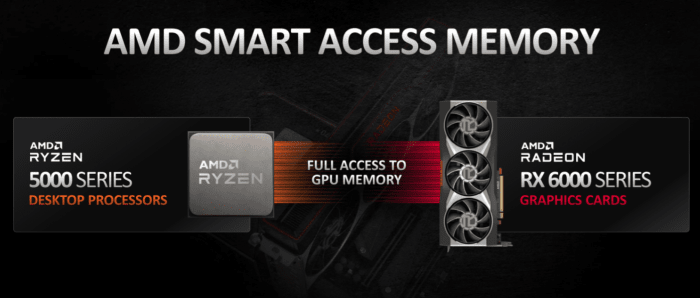
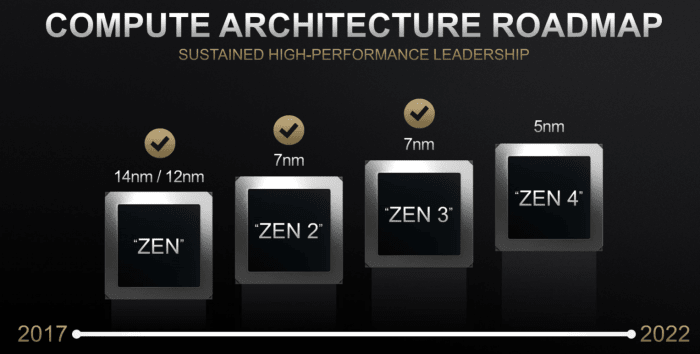
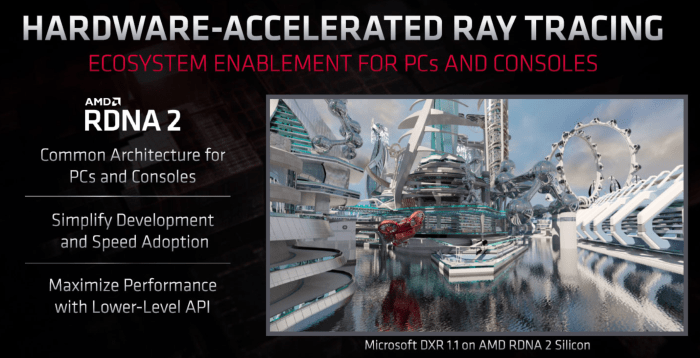
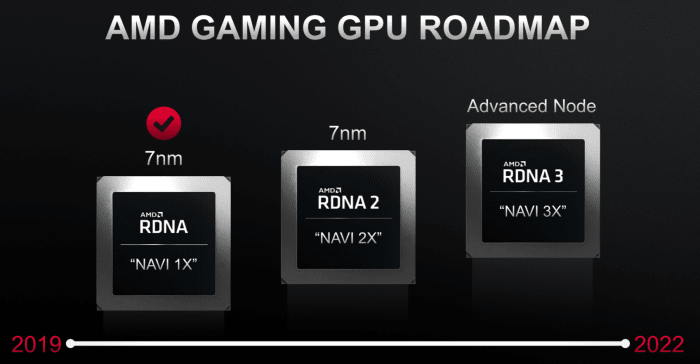
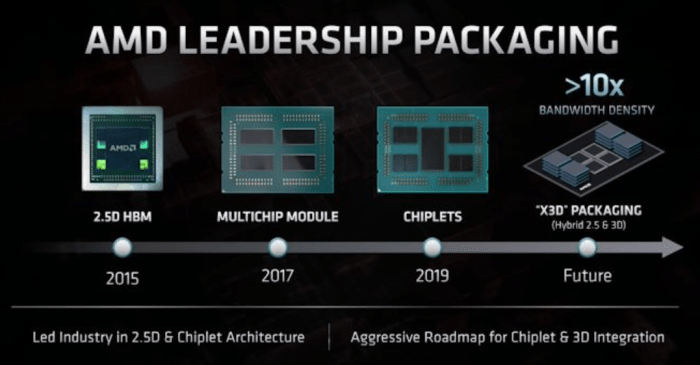

No comments:
Post a Comment